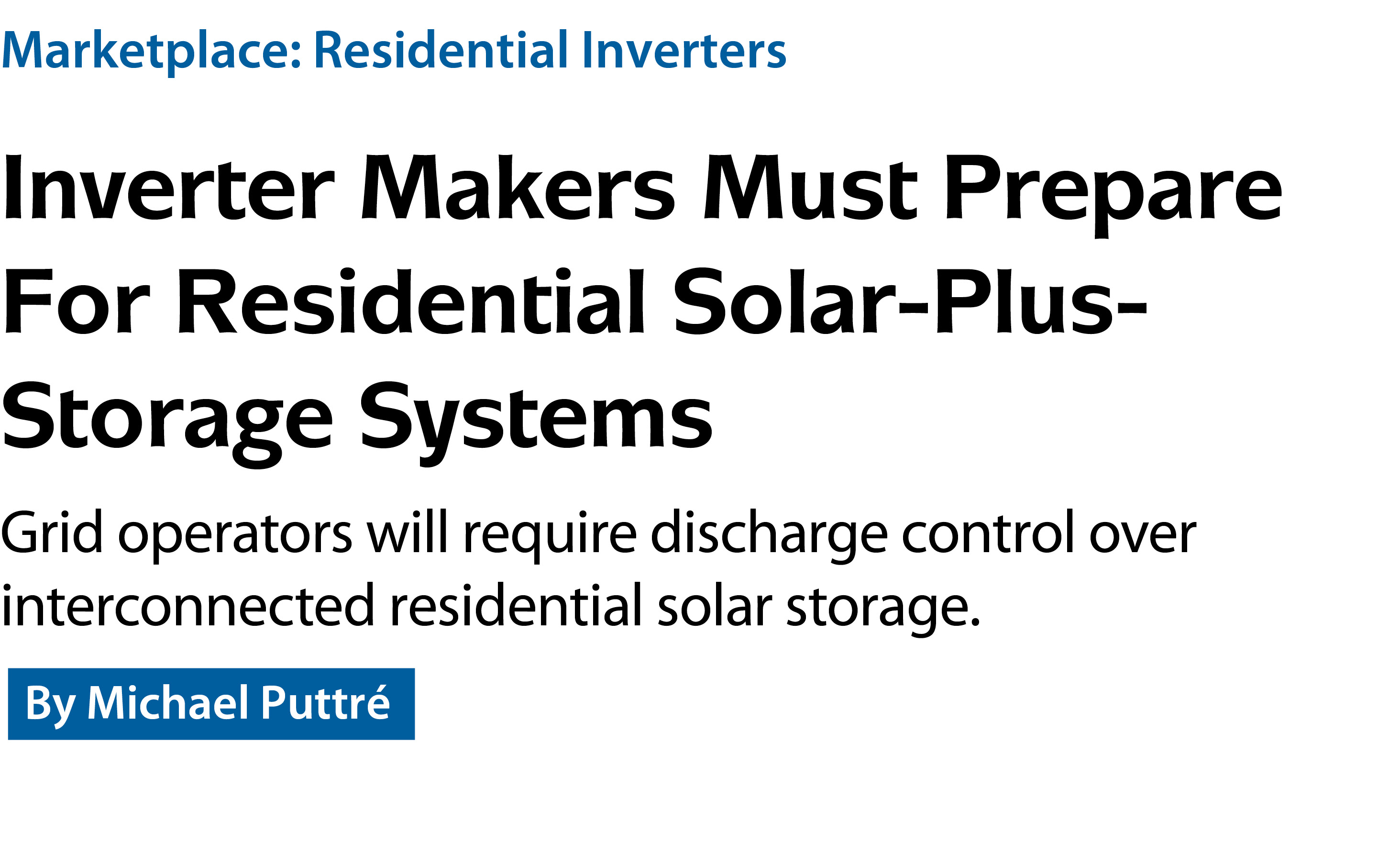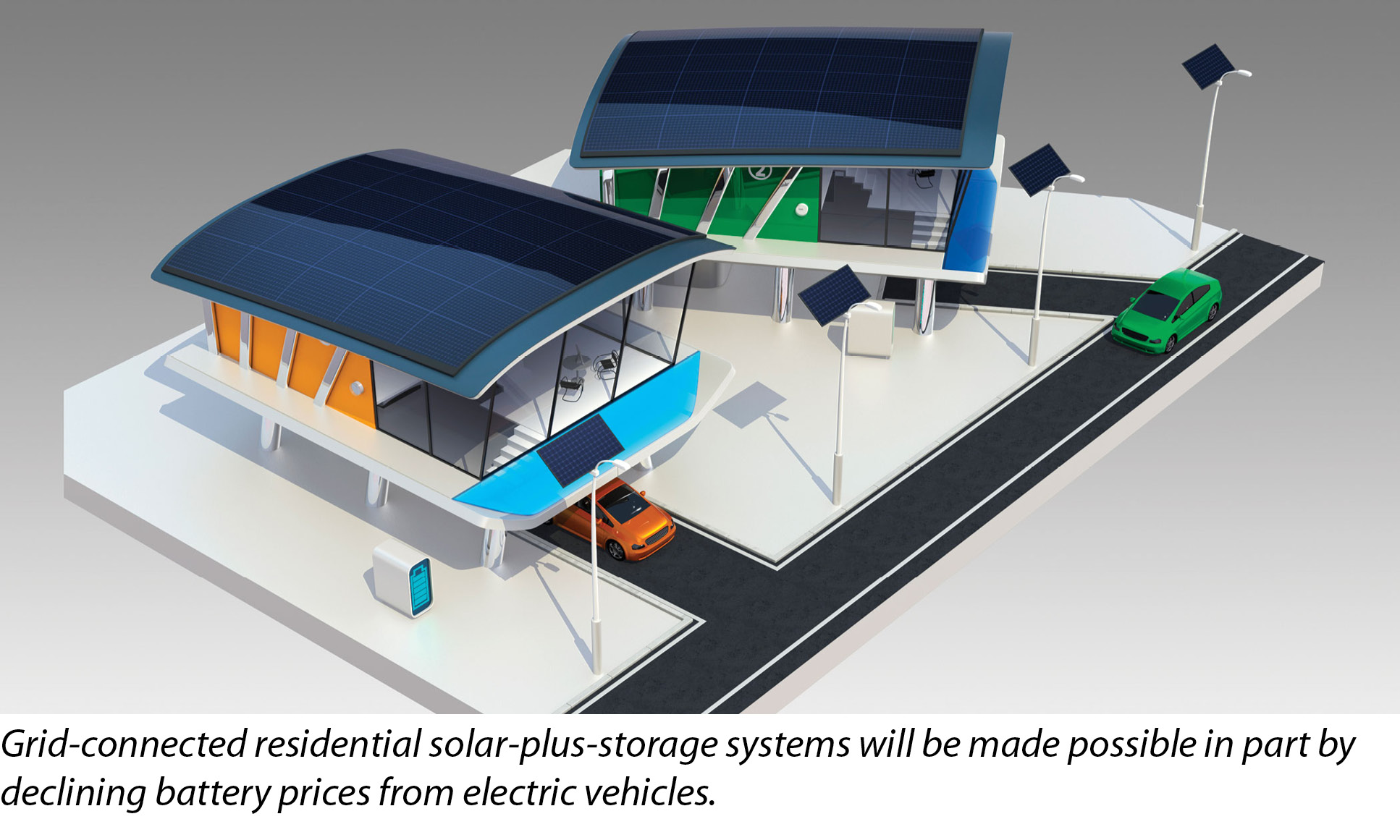

301 Moved Permanently
For reasons of policy, ideology and economics, distributed generation (DG) photovoltaic power installations are expected to assume a more prominent role in the solar generation capacity of the U.S. The pie itself is growing, and DG’s slice of it should grow proportionally as well as in relation to the whole.
By and large, the dynamics of solar growth are offering opportunities to manufacturers of PV products and services for the residential marketplace. However, these dynamics seem likely to place additional burdens on manufacturers of inverters and micro-inverters as these systems take on an increasing share of the responsibility for maintaining the health of the grid to which they interconnect.
An important aspect of this responsibility will be how inverters are configured to manage energy storage components of DG installations in customer-side, behind-the-meter settings. Storage offers too many benefits to the consumer and the grid operator not to become a common, if not essential, part of residential PV installations in the not-too-distant future. While solar paired with storage currently is a tiny fraction of the residential PV market, this combination is expected to become more common as battery costs come down.
Looming large
Chris Edgette, senior advisor to the California Energy Storage Alliance, says solar power is in danger of becoming a victim of its own success.
“When I got into solar in 2000, we were doing 100 kW,” Edgette says. “Then 1 MW was a big deal. And now we’re actually impacting the overall load profile of the grid. This is fantastic news. But it makes grid operations difficult.”
As variable energy sources penetrate the grid, there is no escaping the various incarnations of the creatures that loom in the net load curves that result from plotting out generation and consumption over a 24-hour period. Whether they resemble ducks or sea monsters, mismatches between the peaks and valleys of these curves represent excesses or shortfalls that have to be compensated for by grid operators.
Edgette is concerned that as variable-generation sources come online, grid operators will have to balance them with conventional sources. Keeping a lot of conventional sources running - specifically coal, oil and natural gas - can offset the reduction of greenhouse gas emissions, which is one of the compelling reasons for deploying renewables in the first place.
The good news, Edgette says, is that he sees a definite parallel between the cost trajectories of solar power and battery-based storage systems. In both cases, the technology started with high-value applications. As the costs came down, the applications became broader.
“The projected costs of energy storage are going to come down and do so quickly,” he says. “The fact that we are putting batteries in laptops, phones and electric vehicles in particular is dropping the costs quickly. Meanwhile, the cost of conventional generation is going up.”
Last November, California became the first state in the nation to adopt targets for energy storage. All three investor-owned utilities are required to procure, between them, a total of 1.325 GW through 2020. Carla Peterman, a commissioner of the California Public Utilities Commission (CPUC), says the agency’s approach to the storage issue is enabling a wide range of storage technologies and deployment options to develop.
In addition to having individual targets for investor-owned utilities, the CPUC has also set targets for transmission-connected storage, distribution-connected storage and customer-side storage. The latter category, Peterman says, which amounts to a carve-out of 200 MW, had not received much attention in stakeholder forums as the targets were crafted but is likely to have far-reaching consequences for DG solar in the state.
“I feel that since we adopted the targets in November, we have been hearing a lot of interest in the customer-side storage,” Peterman says. “So, I look forward to seeing how that market evolves. We allow utility and third-party ownership of all the different types of storage, which traditionally you don’t see for behind-the-meter. To be frank, there were not too many ideas that came forward for that. But we really wanted to be as flexible and open as possible for different business models to evolve.”

Reaching into residences
As DG becomes a more important part of the renewable energy mix, distributed, customer-side, behind-the-meter storage will grow in importance right along with it.
“Energy storage is a game-changer when it comes to managing the curve,” says Heather Sanders, director of regulatory affairs for distributed generation at the California Independent System Operator (CAISO). “You won’t care what the load shape is if you have enough storage in the right place with the right capabilities at the right time.”
The problem from a grid-integration point of view is enabling the grid operator to reach into the home to control the discharging and even charging of the storage system. This problem has both technical and commercial aspects. Inverter makers will be called on to incorporate features into residential products that enable the dispatch control an ISO needs to manage the network. At the same time, solar-plus-storage customers want to enjoy peak shaving, backup power and energy arbitrage enabled by their investments.
Steve Berberich, president and CEO of CAISO, says the solar sector needs to get its arms around a number of issues in order to help usher in the age of grid-connected DG.
“The inverters can clearly provide grid resources,” Berberich says, adding that the devices will be tasked with providing reactive power, voltage support and frequency support. “They need to be good grid citizens.” S
Marketplace: Residential Inverters
Inverter Makers Must Prepare For Residential Solar-Plus-Storage Systems
By Michael Puttré
Grid operators will require discharge control over interconnected residential solar storage.
si body si body i si body bi si body b
si depbio
- si bullets
si sh
si subhead
pullquote
si first graph
si sh no rule
si last graph